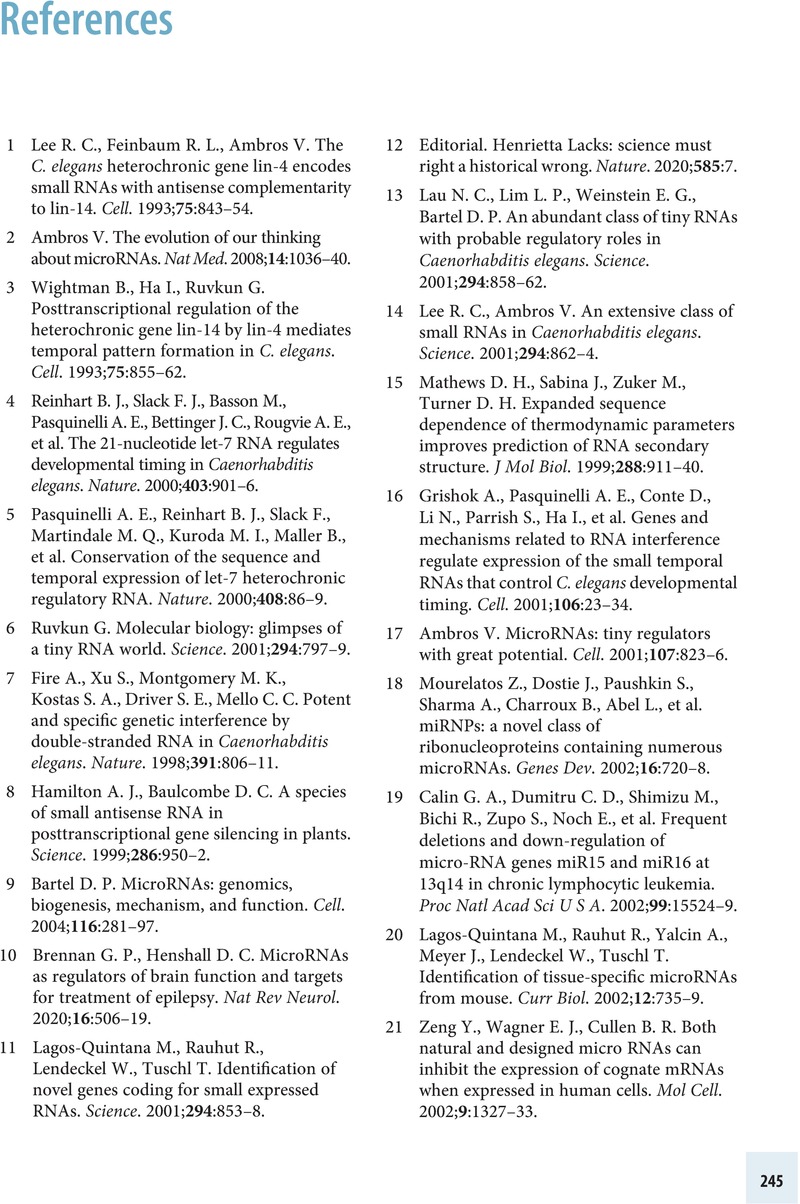Book contents
- Fine-Tuning Life
- Reviews
- Fine-Tuning Life
- Copyright page
- Dedication
- Contents
- Figures
- Ode to the MicroRNA
- Acknowledgements
- Common Terms and Definitions
- Introduction
- Chapter 1 Discovered!
- Chapter 2 MicroRNAs Emerge as Master Controllers
- Chapter 3 Epic Journey
- Chapter 4 Opening Act
- Chapter 5 MicroRNAs Shape the Machinery of Our Minds
- Chapter 6 Centre of the Electrical Storm
- Chapter 7 MicroRNAs Become Medicines
- Chapter 8 Circulating MicroRNAs Provide a Diagnosis
- Chapter 9 Finale and Encore for MicroRNAs
- References
- Index
- References
References
Published online by Cambridge University Press: aN Invalid Date NaN
- Fine-Tuning Life
- Reviews
- Fine-Tuning Life
- Copyright page
- Dedication
- Contents
- Figures
- Ode to the MicroRNA
- Acknowledgements
- Common Terms and Definitions
- Introduction
- Chapter 1 Discovered!
- Chapter 2 MicroRNAs Emerge as Master Controllers
- Chapter 3 Epic Journey
- Chapter 4 Opening Act
- Chapter 5 MicroRNAs Shape the Machinery of Our Minds
- Chapter 6 Centre of the Electrical Storm
- Chapter 7 MicroRNAs Become Medicines
- Chapter 8 Circulating MicroRNAs Provide a Diagnosis
- Chapter 9 Finale and Encore for MicroRNAs
- References
- Index
- References
Summary

- Type
- Chapter
- Information
- Fine-Tuning LifeA Guide to MicroRNAs, Your Genome's Master Regulators, pp. 245 - 263Publisher: Cambridge University PressPrint publication year: 2024



